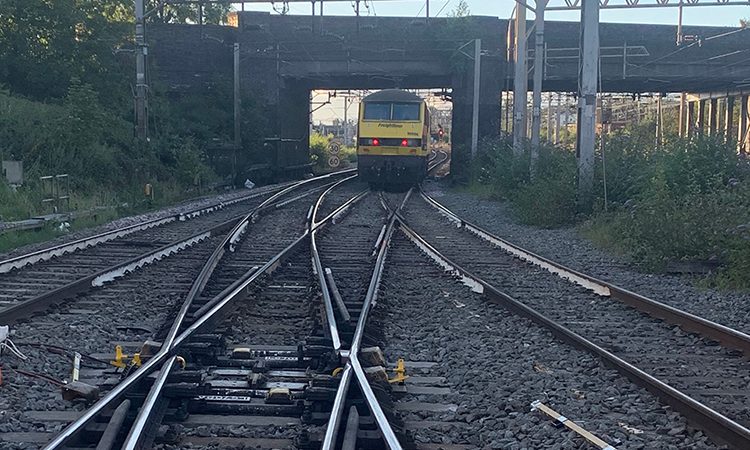RAIB report released on Stafford Junction signal passed at danger incident
Posted: 18 June 2024 | Global Railway Review | No comments yet
RAIB releases report on a Freightliner locomotive test run passing a red signal at Stafford Junction, prompting calls for improved safety measures and driver training.


Credit: RAIB
The Rail Accident Investigation Branch (RAIB) has released its detailed report on the incident involving a signal passed at danger (SPAD) at Stafford Trent Valley Junction No. 1 on 22 August 2023.
At approximately 16:41 a Freightliner-operated electric locomotive on a test run after undergoing repair work passed a red signal on the approach to Stafford Trent Valley Junction No. 1. The locomotive continued for 740m beyond the signal, ultimately running through points before halting at the junction.
Incident details
The locomotive’s stopping position conflicted with a route set for a southbound train, though fortunately, no trains had been in the immediate vicinity at the time. Just seconds before the incident, a northbound train had safely passed the junction. The locomotive did not foul the line used by the northbound train.
Despite the lack of injuries and the locomotive remaining on the track, the points it ran through sustained some damage. The RAIB’s investigation concluded that the locomotive’s excessive speed approaching the red signal was a primary factor. This speed prevented the locomotive from stopping in time.
Causes identified
The report highlighted that the driver’s attention had been diverted due to a fault in the locomotive, which had previously caused the driver to stop at an earlier signal. The driver, unfamiliar with this specific fault scenario, had been distracted while resolving the issue. It is possible that the previous signal was not clearly visible when the driver restarted the locomotive, further contributing to the oversight.
RAIB found deficiencies in Freightliner’s risk management for test runs and light locomotive operations. The company’s competence management system did not adequately prepare the driver for unexpected, distracting situations.
HS1 delivers cost savings and performance improvements amidst economic challenges
Additional findings
The incident had been aggravated by several factors:
- High acceleration applied after the fault was cleared
- Locomotive configuration
- Speeds exceeding those permitted by operating rules.
Furthermore, no automatic safety system intervened to apply the brakes before the driver did so manually.
Recommendations and learning points
RAIB has made two critical recommendations to Freightliner:
- Review and improve risk assessments and processes for operating light locomotives and test runs to better manage operational risks
- Enhance training and assessment for drivers to effectively handle abnormal, stressful situations.
Additionally, three learning points have been identified:
- Strict adherence to locomotive speed rules
- Importance of route knowledge development and maintenance
- Proper settings for train protection systems.
This comprehensive investigation underscores the need for improved safety protocols and training to prevent similar incidents in the future.








